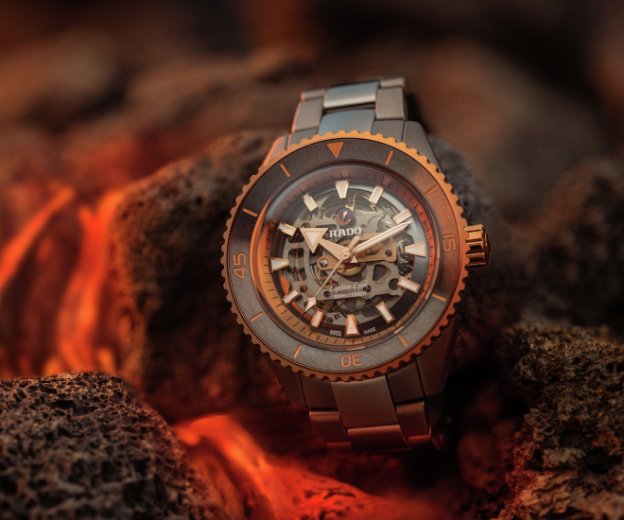
As far as dive watches go, the Captain Cook from Rado often gets neglected when enthusiasts gather to discuss references from the past. After all, the watch was only made for about six years in the 1960s before it was discontinued. And it had no significant ties with military forces, as all the most prominent dive watches at the time seemed to have. All it had however is the name of the intrepid explorer James Cook on its dial accompanied by Rado’s famed anchor. But, as we will soon find out, Cook’s adventurous spirit and his embracing of the importance of science would create a ripple effect that extends to the present and bring Rado’s humble dive watch back into the folds of conversation among enthusiasts.
Since the rebirth of the Captain Cook collection in 2017, Rado has updated each successive generation with their latest watchmaking technologies. And as the collection grew, so did the boldness of its ideas. For 2023, the latest Captain Cook High Tech Ceramic Skeleton has emerged out of the sea to showcase not only Rado’s technical side of watchmaking but also reinforce its status as a Master of Materials.
New World Exploration
To understand the Captain Cook at present, we must first dive into its past. Although the watches of Rado look as futuristic as watches come, its history actually dates back to 1917 when brothers Fritz, Ernst and Werner Schlup converted part of their parent’s home into the base of operations for Schlup & Co. After the Second World War, they had become one of the largest producers of watch movements, all the while upholding the ‘Swiss-made’ quality standard. It was around then that they decided it was time to launch their own brand and thus, the name Rado was born, based on the Esperanto word for wheel.
As with all mechanical watches at the time, innovation was synonymous with necessity. And the first Rado-branded watch, the Golden Horse, was created in 1957 based on a water-resistant case construction. In 1962 the Rado Diastar was created with an ultra-resistant hard metal, earning it the title of the world’s first scratchproof watch. It was in this same year that the first Captain Cook debuted.
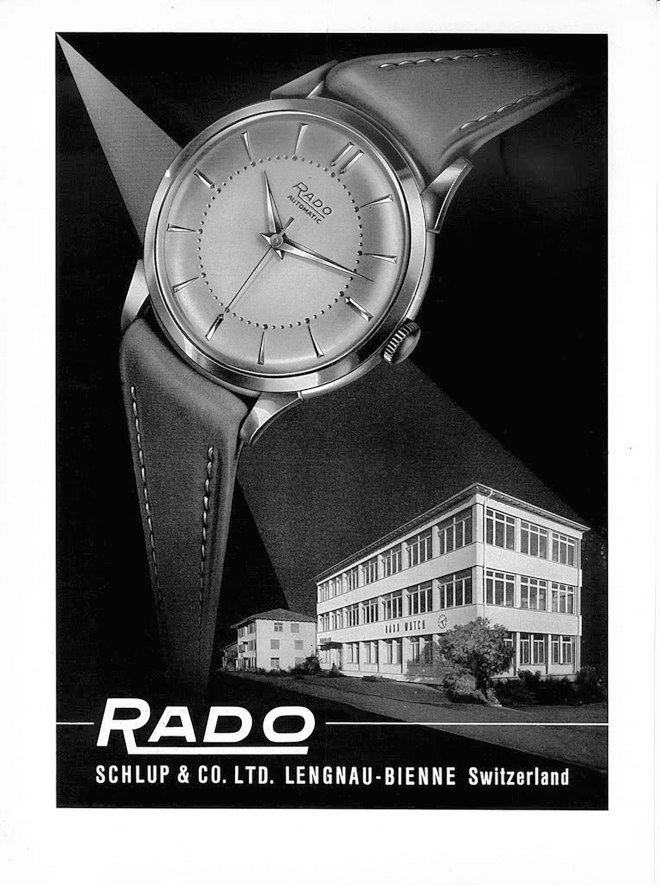
An advertisement featuring the name Rado circa 1952.
In the 1960s there was a steady uptake of recreational diving thanks to the invention of scuba (self-contained underwater breathing apparatus) gear like the Aqua-Lung by French engineer, Émile Gagnan, and the world-renowned explorer, Jacques Cousteau. To tap into this highly lucrative market, Rado created their own version of a dive watch, offering a timepiece with a greater level of water resistance and a timing bezel that was essential for divers to keep track of their dive times.
Back then, the accuracy of the timekeepers and the reliability of these bezels could mean the difference between life and death as it was used to keep track of decompression timers. Decompression is the act of taking breaks at specific depths so that the body has time to naturally dissipate the nitrogen that has seeped into the tissue from breathing the compressed air within the scuba tanks. If the timing is not adhered to, the nitrogen will expand as the outside pressure decreases creating bubbles in the joints, lungs, and/or spinal column which depending on the severity can be fatal.
Rado christened their dive watch collection after the legendary British explorer James Cook. Captain Cook was most known for his expeditions to the Pacific Oceans where he circumnavigated and mapped New Zealand. Cook was also revered for his navigational prowess relying on astronomy, and accurate marine chronometers to determine his position on the globe. Additionally, he often carried several scientists on his voyages allowing them to make significant observations and discoveries like the cataloguing of over 3,000 plant species during his first voyage in 1768 and on his second voyage, the artist William Hodges produced notable landscape paintings of Tahiti and Easter Islands.
The New Expedition
One of the hallmarks of a great design is that no matter how many years go by, its form and function remain relevant in the present. If you look at the first Rado Captain Cook launched in 1962, everything was designed to be both functional and beautiful at the same time. The hour markers contrast against the background, the hands are large and obvious, and even the Rado insignia freely rotates not just as an aesthetic choice but back then, it was also used as an indicator to tell you when the watch needed to be serviced. Additionally, some other identifying traits of the Rado Captain Cook collection are the bezel that is sloped inwards and the box-style crystal.
After the Captain Cook was discontinued in 1968 it spent a good 40-plus years in hibernation and in 2017, in a move that took most of the watch industry completely by surprise, they relaunched a new Captain Cook that looked almost identical to its predecessor. All of the design cues of the original were still there, updated with modern movements and a better-constructed case of course. But the one thing that really caught the attention of aficionados was the fact that Rado decided to keep the sizing at 37mm.
A small dive watch was nothing special in 1962 but in 2017, when trends were leaning towards oversized chunky watches (especially so in the dive watch category), the creation of a small and svelte option was one that found its niche set of customers. This smaller size was also ahead of the game at the time as only now other brands have started to gravitate towards reducing the size of their watch cases.
Master of Materials
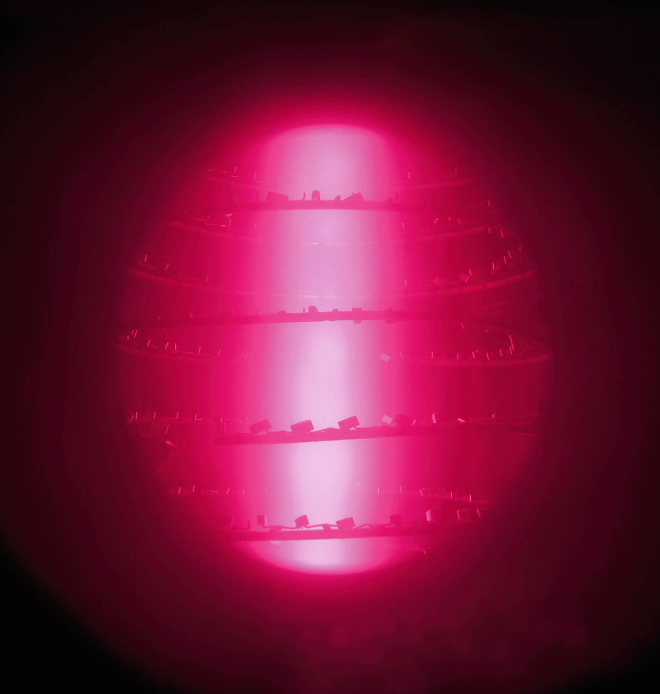
Extremely high temperatures are needed to create the glossy finish on Rado’s ceramic cases.
With Rado’s reputation for manipulating the ultra-hard, scratchproof, corrosion-resistant, lightweight and hypoallergenic ceramic material, it would only make sense for them to incorporate this highly technical material into the Captain Cook collection. Various forms of ceramics have been around for thousands of years, however, unlike its rudimentary forms like vases and bowls, the ceramics used in Rado’s manufactures are lightyears away in terms of technology.
Rado’s High-Tech Ceramic material starts out as ultra-fine zirconium oxide powder with a grain size of approximately 0.001mm, 50 times smaller than the diameter of human hair. After it is mixed with a binding agent, it is injected into a mould at 1,000 bars of pressure. Next, it enters a sintering process where it goes into an incredibly high-temperature oven of 1450°C and over many hours, this ceramic fully hardens. Then, specially designed diamond tools are used to rework the end product to achieve the strict tolerances needed for the case to ensure the watch can be assembled perfectly and to keep the integrity of the water resistance rating. Interestingly the high-tech ceramic, when it was first created, was only available in black. It was only in 1993 that coloured ceramics became available.
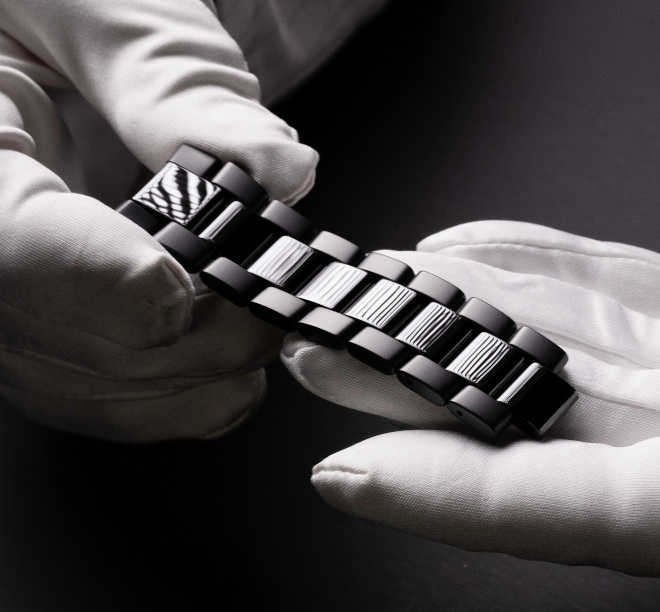

Rado has been constantly perfecting and updating their ceramic manipulation technologies for more than 35 years now and they have brought the craft to a point where they are now able to precisely control the outcome of the materials down to the precise shade of colour or even a specific texture on the surface. A case in point is their plasma finishing where the high-tech ceramic is subjected to yet another high-temperature process to give the material a permanent metallic shade without the use of any metallic content.
Past Meets Present
Since the return of the Captain Cook collection in 2017, many variants have been added to its repertoire with each successive year. But this year, their latest reference seems to have taken all the brand’s savoire faire and combined it into a single, all-encompassing watch – the Captain Cook High-Tech Ceramic Skeleton.
Let’s start with the case. From afar, the watch exudes all the design cues that identify it as a Captain Cook, the case shape, the sloping bezel, the arrow hour hand, and the box-style crystal are all there. However, it is only upon closer inspection that all the nuances of this fantastic timepiece become obvious. Firstly, the case is made entirely of plasma high-tech ceramic and its famed properties of extreme surface resistance. This makes it perfect for a dive watch that is usually worn in, shall we say, more adventurous situations. Additionally, the bezel and bracelet are also made from the same robust material.
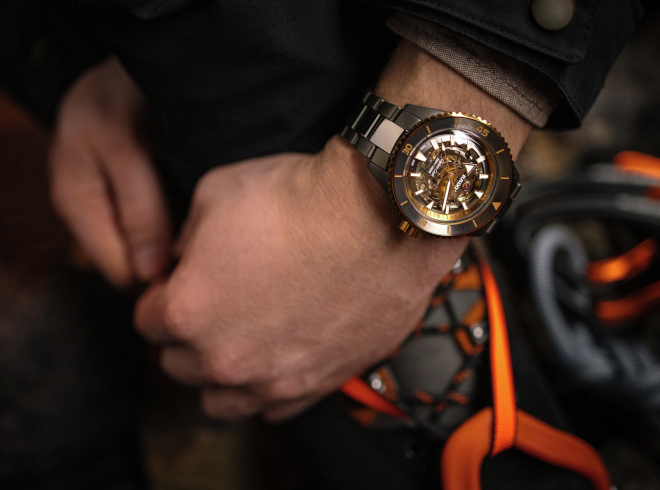


For this reference, Rado chose a deep anthracite colour to represent the virile, primal forces of the mineral world. Various shades and finishing techniques are added to the case components to give the watch additional character. The matte finish of the monobloc case is contrasted visually with the circular brushed finish on the bezel insert. Even the bracelet offers centre links of a lighter shade and a glossy mirror finish for a more elegant look. Lastly, to give the watch that added pop of visual detail, the bezel is made in a rose-gold colour with matching bezel indicators.
As we dive deeper into this Captain Cook reference, the transparent dial offers an unbridled look into the new and improved skeletonised movement. The Calibre R808 skeleton has been reworked with a smart new geometry and the components are shaded in different tones to give it an architectural façade. The box-shaped sapphire crystal adds to this effect by increasing the visual depth, and to give all of it an air of mystery, the crystal has a lightly smoked tint. The movement itself is highly reliable with a Nivachron hairspring, offering unparalleled anti-magnetic properties. The power reserve for the movement is 80 hours which when fully wound will let the watch sit on a dresser over the weekend and still have more than enough juice to keep going when Monday rolls along.
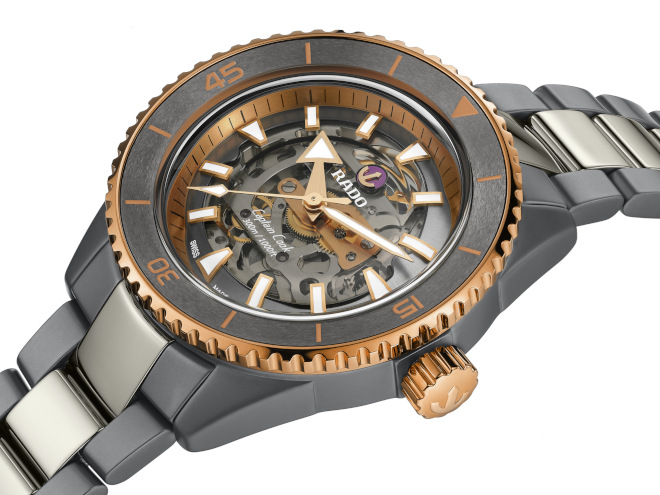
Global Phenomenon
In tandem with the launch of the new Rado Captain Cook High-Tech Ceramic Skeleton, they have also announced a new brand ambassador – Ji Chang-Wook. The popular South Korean is already a household name in his home country and with the K-wave hitting frenzied levels across the globe, Ji Chang-Wook is a name that clearly, most around the world are also familiar with.

Having got his start in the industry when he was just 20 years old, his fame sky-rocketed when he played a Korean-American speed skater in 2010’s Smile Again, which aired every weekday during prime time for 159 episodes. Since then, his acting career has also diversified with contemporary and historical characters across a broad range of film, television and web series formats. His versatility on screen is also mirrored in his ability to perfectly play an Emperor like in the drama Empress Ki or romantic roles like in Backstreet Rookie and Lovestruck in the City in the same convincing fashion.
“I have always been interested in Swiss watches, especially in unique designs and special materials, and I’m very happy to star in my new role as Brand Ambassador for Rado. The Captain Cook is such a beautiful watch, I look forward to wearing it whenever I can.” Comments Ji Chang-Wook.
In many ways, this Captain Cook High-Tech Ceramic Skeleton draws parallels to the brand’s South Korean ambassador. His diversified talent in multiple roles is similar to how the watch can fit into many daily roles. Designed with dive watch aesthetics, the Captain Cook is naturally rugged and fits casual dressing styles and yet, thanks to its unique grey and gold colour combination along with the polished centre links of the Plasma High-Tech Ceramic bracelet, the watch will look just at home in a suit or dinner jacket.
Even with his fame as an actor, Ji Chang-Wook doesn’t seem to be contented in just one realm of the entertainment industry. Despite being an award-winning actor, he still finds the time to actively dip his toe in the music industry. To date, he has appeared frequently in musicals and music videos and has even recorded a number of OSTs (Original Sound Tracks). For a man that seems like he wants to do it all, the watch is a perfect accompaniment to him, because through Rado’s constant pursuit of research and development when it comes to materials, the watch is created to withstand anything and everything life can throw at it. And the best part is, it does so with the utmost amount of style.
